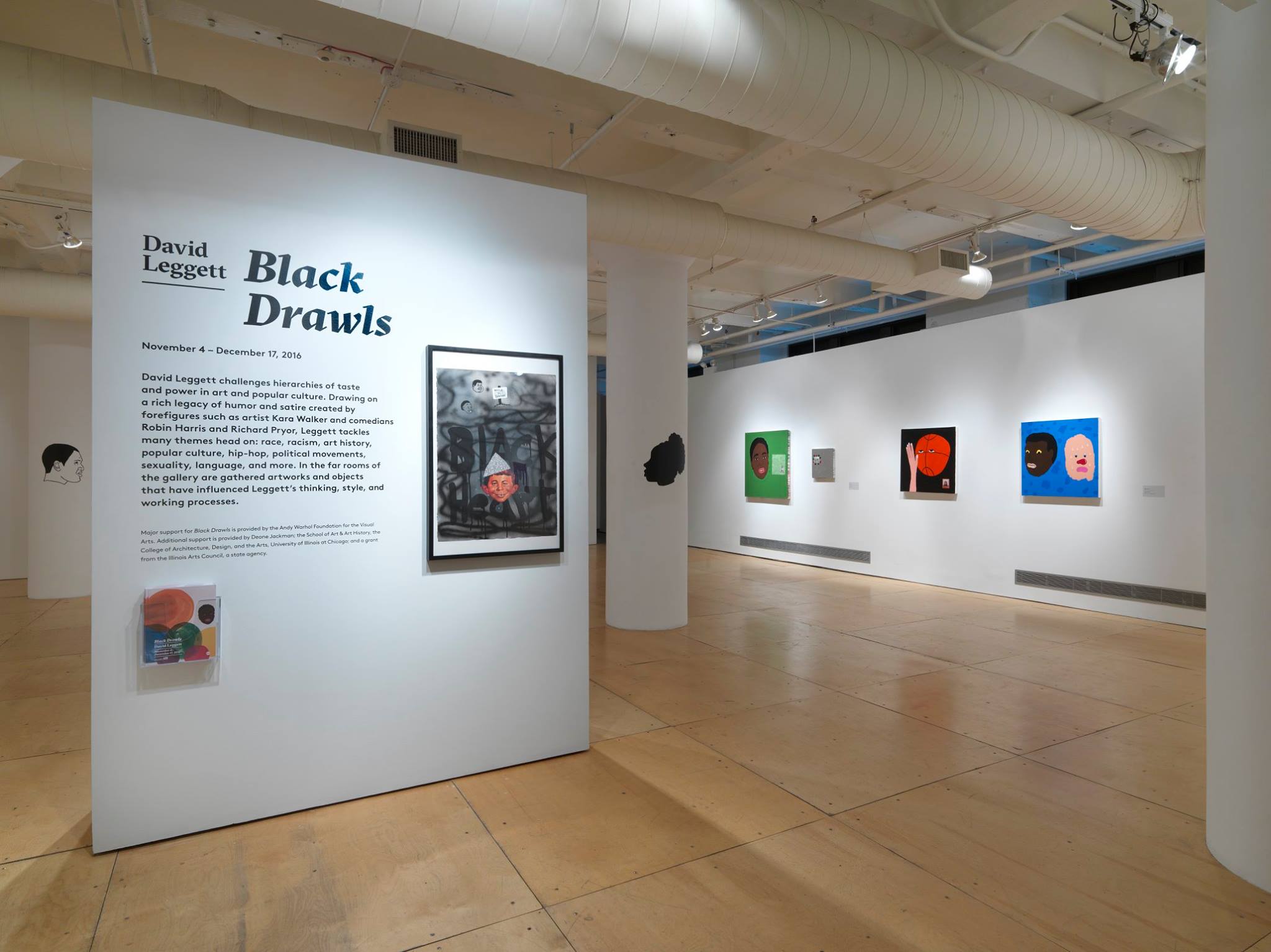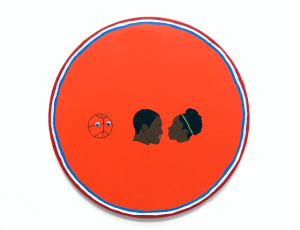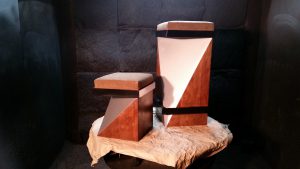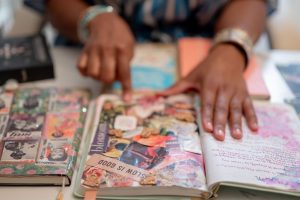In light of his solo exhibit Black Drawls at Gallery 400, which runs through December 17th, I spoke with David Leggett, a funny and a surprisingly soft-spoken artist who at first had few words. Eventually, we ended up in a studio visit that lasted almost two hours!
Leggett has been covered extensively in local and regional arts and culture media outlets, so I initially struggled to figure out just what I wanted to learn and share about him. What else is new when you’ve already talked about your art practice, your influences, and your future work to everyone in town? What else is there to say when you’re used to getting five questions from writers and one sends you 30 to answer?
I ended up laughing a lot and learned a new thing or two to share. Read now and come back often as I take the time to dig deeper and uncover more about the music, artists, comedians who have influenced him and his life growing up in Springfield, Massachusetts.
In this part of the interview, we talk about all things ephemera: collecting, saving, and how being an overall packrat is integral to his art practice.
Sheila Lewis: You have a ‘collection of things’. Tell me about your ephemera.
David Leggett: I have a lot of ephemera that I’ve collected over the years, starting with early Americana racist ephemera. There’s a spittoon which is a black face, smiling and laughing. It’s a certain level of racism that makes you say, “Wow, that’s kinda surprising.” And it’s not as old as you think–it’s probably from the 1950s. From my research, I found there are actually more spittoons from other cultures and other races, but the Black spittoon seems to be more popular since it’s easier to find than the figures from other races.
I collect spittoons because I’m fascinated by seeing us in commercial images and how they’ve been whitewashed over the years. I have mammies. I have Uncle Remus and Aunt Jemima. I am constantly thinking how racist these things were, but how cleaned up they are today. You won’t look twice when you see these images in grocery stores, but if you saw the 1960s version you’d probably fall out. It’s a very American thing. These things don’t necessarily go away. They get cleaned up and made more digestible for today’s culture.
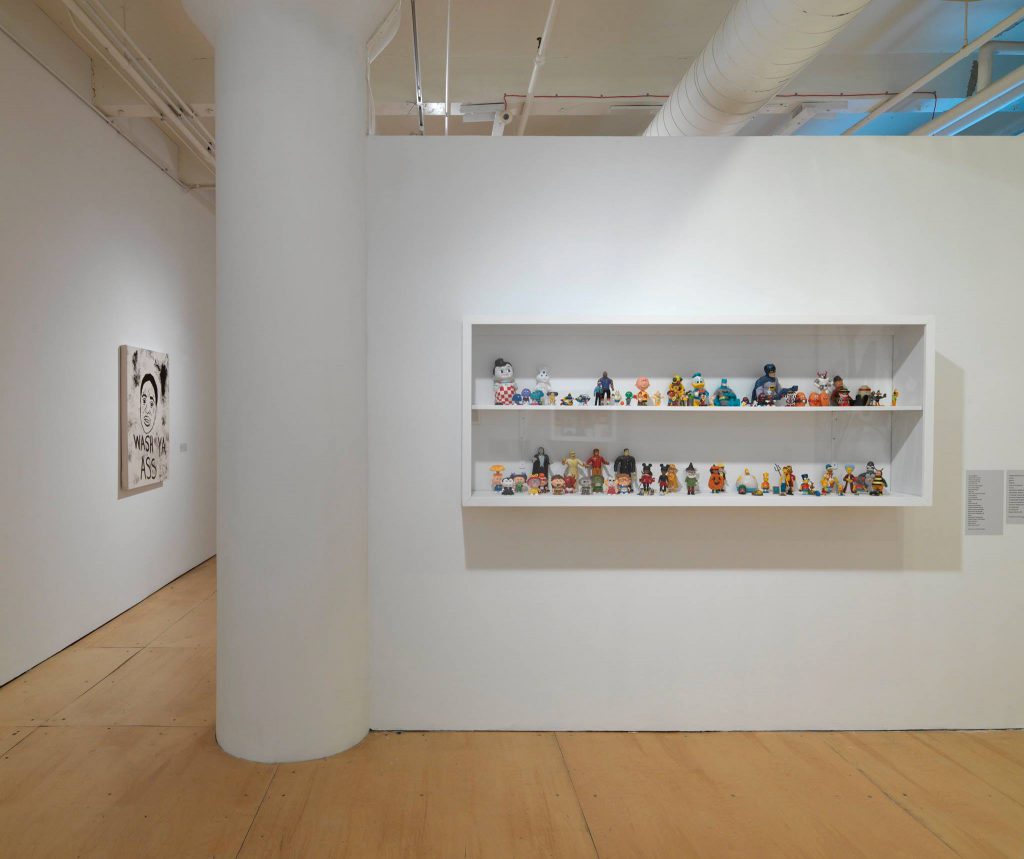
SL: What places do you frequent to keep the collection fresh?
DL: I really enjoy going to thrift stores, flea markets, and second hand stores. When it comes to racist things they are a little bit harder to find in stores, it usually has to be in a really small town. What’s funny about finding these things is it’s clear that someone’s racist grandparent has died and instead of saying, “fuck it, I’m going to throw this stuff away,” they say, “I might as well make a dime out of this.”
What’s also funny is me buying these things as a large Black man. They immediately give me a discount! I think they say, “Shit, we’re embarrassed that we have this and we were going to sell this to another racist person, but now that you’re buying it we’re somewhat embarrassed.” I almost feel like I’m doing [us] a service by buying it so no else does.
I used to go to these stores up to twice a week, but now it’s about once a month. My favorite places change, especially when you live in the city. People become hip to the spots. People are either more wise or just saving more money. There’s a flea market in Waukegan or maybe another suburb where I got one of the old cast iron mammies. I got a discount there as well. What’s funny is the booth next to it had a bunch of World War II stuff. Now, there’s nothing wrong with being a WWII buff, but it is always fascinating to me when someone is more interested in the Nazi side than they are with anything else. There’s a lot you can talk about, but you only focus on Nazi paraphernalia. Isn’t that strange?
I used to love the Salvation Army in Lincoln Park before they remodeled it. But slowly people started to find out about it. I used to go to buy the handmade toys. I remember seeing this incredible record collection of old R&B and Punk Rock records. I said I’m not going to buy the records today. Then I came back the next day and saw all these young hipster kids buying records! I thought this is going to change soon and sure enough, that’s what happened. I used to go to Unique a lot on the south side. Again, people got a little more hip to it–they really had some great stuff. One of my favorite things in the Gallery 400 show is this crocheted decoration that is a thank-you to a sponsor. It’s very sincerely written–not well done but you know the person meant it and they were thankful for their sponsor. I saw it and tossed it aside, but it was 15 cents so for sure I thought it would be thrown away. I’ve now had it now since 2006; it’s been in every apartment and in a properly lit spot.
SL: When did you start collecting things?
DL: I’ve always been a collector of things. I like to keep things in their pristine condition. I was a big comic book collector and a baseball card collector and I still have all that stuff. And of course I had to make sure I had that stuff wrapped up in nice plastic and away from the elements.
My first time, I think I was maybe 15 or 16 years old. I went to a flea market with my mom in North Carolina, [where] flea markets are huge, like the size of about two football fields. I was hoping to buy fireworks and I did! There were a bunch of little knick knacks that I liked. I figured it was cheap, so I can afford to buy a little toy or magazine.
Of course moving to Chicago, there’s the images of the old Maxwell street. It’s not the same now when you go, but there some little interesting things there sometimes.
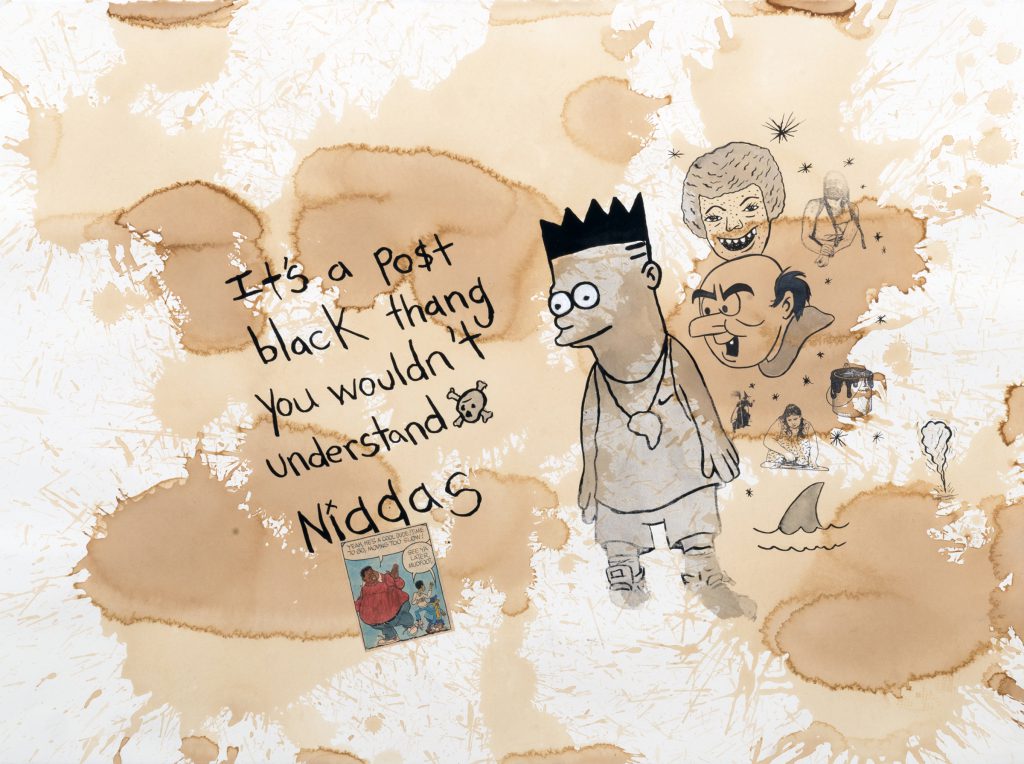
SL: What comics do you collect?
DL: When you’re a young little boy you’re probably into superheroes. A lot of Image Comics had just came out when I was 12, maybe 13. I was into Black superheroes like Spawn. I discovered X-Men and stuff like that when I was older. I also became more interested in underground comics like the comics from the Haight-Ashbury crowd in San Francisco.
I just watched Luke Cage on Netflix. That’s the only thing that I checked out recently. I always thought Luke Cage was a pretty shitty comic book as a kid. I’m glad they revamped it because the comic book was pretty lame back in the day. It’s pretty good on Netflix. I kinda like it.
SL: What do you do with all this stuff?
DL: Some stuff is hanging in my apartment on display and some stuff is still in containers. There’s just no place else to put it. Of course, once my girlfriend saw the display case at the Gallery 400 show she was like, “We should do that in our house!”
This article is part of a two-part series on the artist and his exhibition Black Drawls, which closed at Gallery 400 (400 S Peoria St) on December 17, 2016.
Featured Image: Installation view of Black Drawls at Gallery 400, 2016. Photo by Tom Van Eynde.
 Sheila Lewis is an arts, business and multimedia producer in Chicago. She’s a strategist who helps artists, creatives, entrepreneurs and global brands transform ideas into meaningful stories to drive financial success. She currently designs and delivers learning experiences to effectively reach, serve and engage niche audiences. Video is her vice: she’s been an Executive Producer in over 100 experiential campaigns developing video, podcasts, webisodes and digital content for companies like Procter & Gamble, McDonald’s and General Motors. A foodie that hails from New Jersey, in a former life she worked in finance and photography was her first creative love.
Sheila Lewis is an arts, business and multimedia producer in Chicago. She’s a strategist who helps artists, creatives, entrepreneurs and global brands transform ideas into meaningful stories to drive financial success. She currently designs and delivers learning experiences to effectively reach, serve and engage niche audiences. Video is her vice: she’s been an Executive Producer in over 100 experiential campaigns developing video, podcasts, webisodes and digital content for companies like Procter & Gamble, McDonald’s and General Motors. A foodie that hails from New Jersey, in a former life she worked in finance and photography was her first creative love.
